Roguebook Review

Official Score
Overall - 100%
100%
Roguebook has everything it needs to set the genre on fire. A gorgeous visual feast, combat as deep and challenging as any CCG, rewarding roguelike mechanics - it has it all. If you're a fan of the genre, this one is quickly setting up to be a GOTY contender.
From the creative mind behind the iconic Magic: The Gathering franchise, Richard Garfield, comes Abrakam Entertainment’s entry into the increasingly popular roguelike genre: Roguebook. Based on Abrakam’s popular strategy card game Faeria, players are thrust into a fantasy world, trapped between the pages of a magical book and seeking for a way to escape.
Roguebook Review
[line style=’solid’ top=’10’ bottom=’10’ width=’100%’ height=’1′ color=’blue’]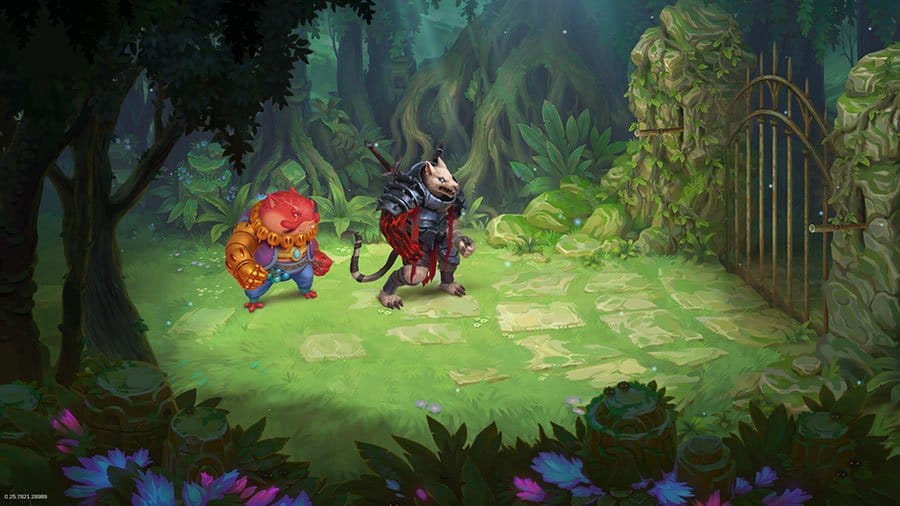
I was fortunate enough to have the opportunity to dive into Roguebook for a preview earlier this year and while the content on offer was limited, I knew straight away that the team at Abrakam Entertainment had hit that special roguelike formula shared by the greatest games in the genre. Just when I thought Darkest Dungeon was the peak of the genre, I was blown away by Slay the Spire. Once again, convinced that was the best it was going to get, Hades blew everyone away. Roguebook has wasted little time in cementing its legacy as one of the best the genre has to offer.
Roguebook is a game that wears its inspiration on its sleeve. Slay the Spire fans will instantly recognize the general combat layout and card design, while fans of the roguelike genre will quickly get up to speed on its general features and mechanics. However, that’s not to say that Roguebook doesn’t bring its own artistic flair, and it’s the delivery of this artistic creativity that truly sets it apart from the competition.
The visuals are absolutely gorgeous, from the isometric-style environment filled with color and detail to the charming characters and bizarre creatures. Roguebook brings something fresh and exciting as it incorporates art and style into the very fabric of the game. Each page of the book acts as a level; there are three environments in total, each themed and designed slightly differently. Most of the roguelike games that center around a CCG design fail to capture the thrill and challenge of exploration, oftentimes simply giving the player the choice between two or three paths.
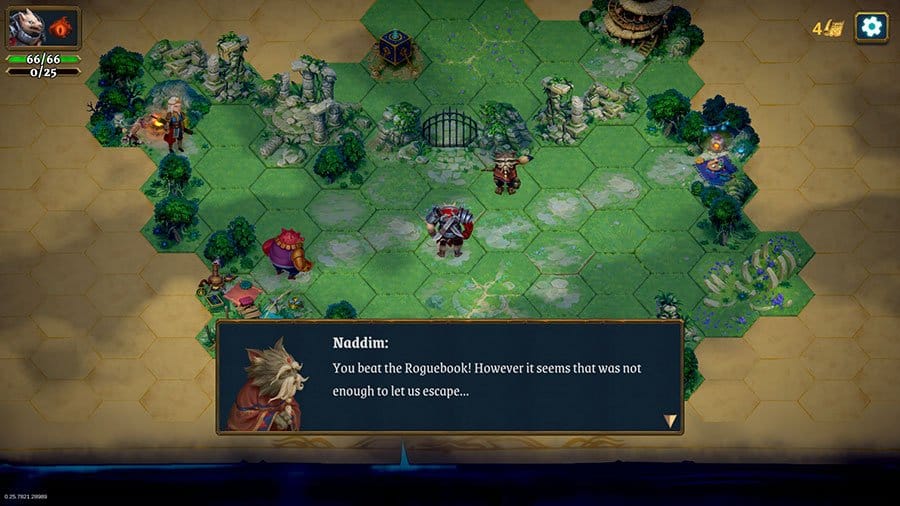
Roguebook throws that out the window and offers a blank canvas for players to explore. Each map has a single route that leads to the chapter boss. That route has a few guaranteed encounters, such as an epic battle and a few vaults to purchase cards from. However, straying from the beaten path is where the game truly shines. In an almost fog-of-war-like state, much of the map is blank, plain, yet to be brought to life. As you explore, defeat enemies, and find treasures, you’ll be rewarded with ink and paintbrushes. You then use these items to reveal the various paths ahead.
It’s a level of satisfaction and discovery rarely seen in games nowadays. Lining up the perfect inkwell to open a pocket into a large unexplored zone, followed up by a quick swing of a paintbrush – the feeling of accomplishment and glee as that canvas reveals some highly valuable items and challenging boss fights is fantastic. This merely acts as a means of finding items and locating enemies; once you actually get into the meat of the locations you can find when exploring, the game engrosses you like no other.
Roguebook’s combat is very similar to that of Slay the Spire. It’s a turn-based deckbuilding game where you use energy resources to play certain cards before the enemy has the chance to do the same. However, Roguebook brings a new level of depth by combining it with a Darkest Dungeon-style team setup where you can bring two heroes into combat. The hero at the front sustains most of the damage, while the hero in the back works to take down the enemies.
You’ll be switching positions frequently. Certain cards are cheaper when played from certain locations, while others have stronger effects when combined with cards from the other hero. It’s a system that is almost instantly recognizable, yet still manages to remain fresh and engaging 30 hours into the game.
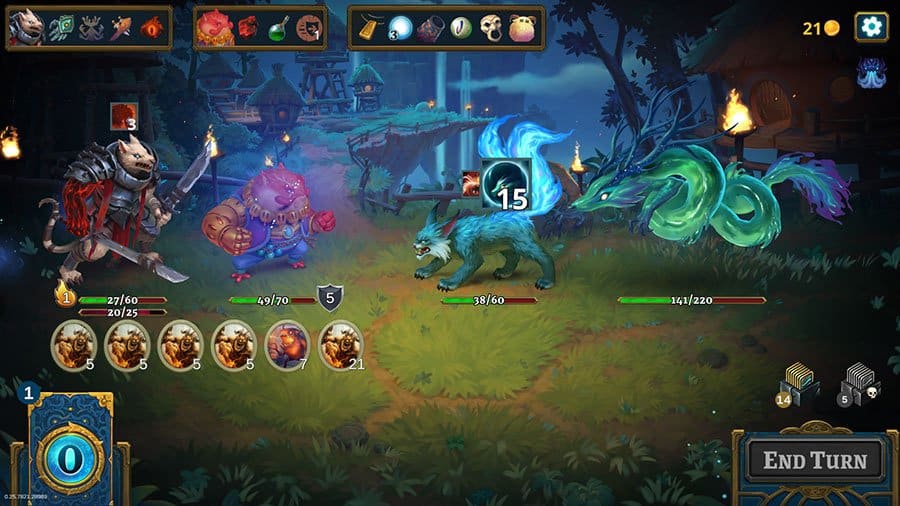
Each character begins with a preset deck of cards. Sorocco, the stout tank-like character, specializes in providing high value blocks and sustain, while Seifer – who has quickly become my favorite roguelike character – blends the ability to heal and increase his damage based on the damage he has received. Each character is completely unique, but they are not restricted to the mere archetypes they initially represent.
The different potential builds for each individual character feels endless. When combined with the different possibilities when combining different builds from other ally heroes, you can play this game 100 different ways. Some builds and general styles are definitely more viable than others, but with the roguelike formula, you’ll rarely find the perfect set of cards and combos to defeat the boss battles with ease. The excitement of just one more run, the possibilities of just one more build; it keeps you driven and coming back for more time and time again. And that’s a good thing as there’s a huge variety of enemies, each with their own unique mechanics, buffs, and debuffs.
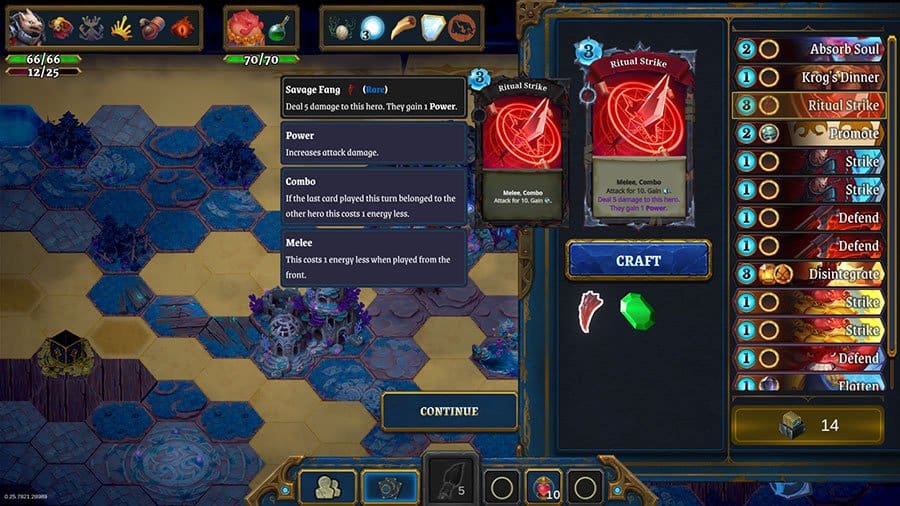
As if the myriad of cards on offer wasn’t enough, most of the cards can be individually customized by slotting gems – special items that you can find and purchase as you explore each page. These gems are game changers, completely altering the value of cards in a heartbeat. One of my best runs focused on a summoner build for Seifer, summoning special ally cards that behave like pets. I’d slotted gems into the summoning spell to reduce its cost, and then slotted gems into another card to make it appear at the top of my deck after use. I was summoning an ally that dealt damage throughout the fight and healed me at the end, and then using another card to double its damage.
This is one combination, using two cards, on a single character. This level of customization is spread throughout the entire game, promising endless hours of theorycrafting for those looking to make fun and quirky deck builds.
Furthermore, Relics also offer another way to customize your party. Certain relics provide buffs to only a single hero, while others provide bonuses to the entire party. Learning to adapt to the cards you’ve found and the relics you’ve discovered, combining their effects to defeat the games huge roster of enemies – it’s a challenging start, but once you get rolling, you see new and exciting combos every time you play.
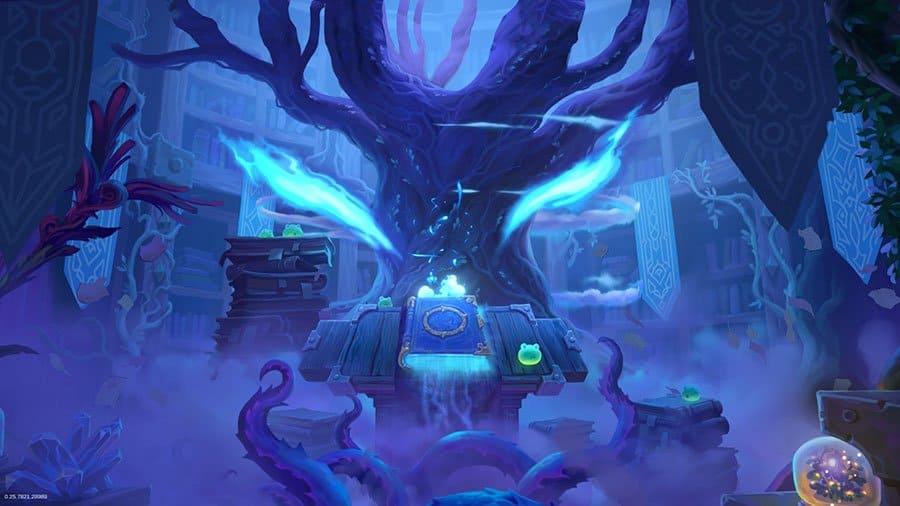
Depending on your experience with the genre and your aptitude for CCG games, it’s very likely you could finish the short three-map campaign in 15-20 hours, which would be disappointing if that’s all the game had to offer. The roguelike elements of Roguebook center around both progress and difficulty. As you defeat bosses and find special items, you earn pages of the book. These pages can be spent on over 30 different bonuses and perks called Embellishments – these are permanent buffs that persist throughout each subsequent playthrough.
Once you’re good enough to take down that final boss there’s no time to celebrate, as you unlock the games enticing difficulty system. After beating the final boss for the first time, you will unlock new challenges that are added to future playthroughs, and these continue each time you successfully complete the game. Each time you start a new run, you have a choice of three different difficulty modifiers. Some will make enemies more powerful, while others make exploring more dangerous. No matter what you choose, each of them provides bigger and better rewards the next time you play.
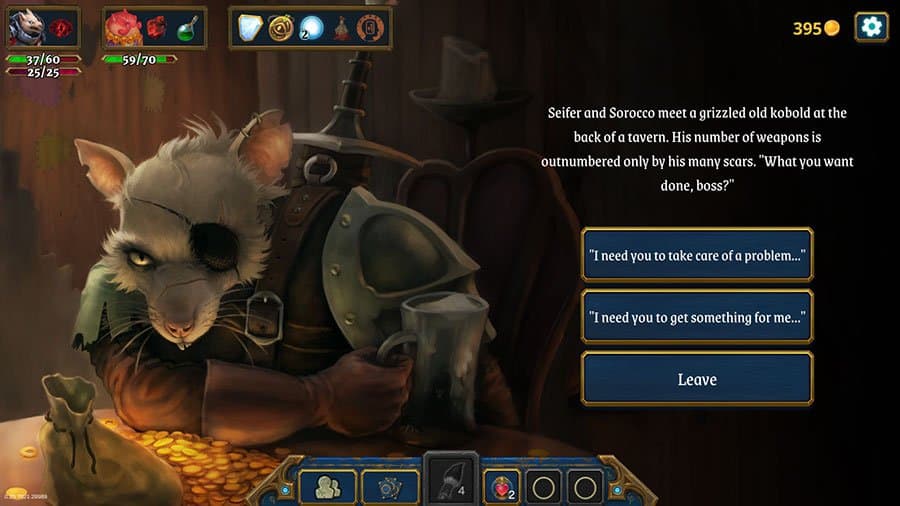
Roguebook has everything it needs to set the genre on fire. A gorgeous visual feast, combat as deep and challenging as any CCG, rewarding roguelike mechanics – it has it all. If you’re a fan of the genre, this one is quickly setting up to be a GOTY contender.
[infobox style=’success’ static=’1′]This review of Roguebook was done on the PC using the Steam client. A digital code was provided by the publisher.[/infobox][blogger ids=” cat=’honest-game-reviews’ orderby=’date’ order=’desc’ count=’4′ descr=’200′ readmore=’1′ rating=’1′ style=’image_large’ border=’0′ dir=’vertical’]